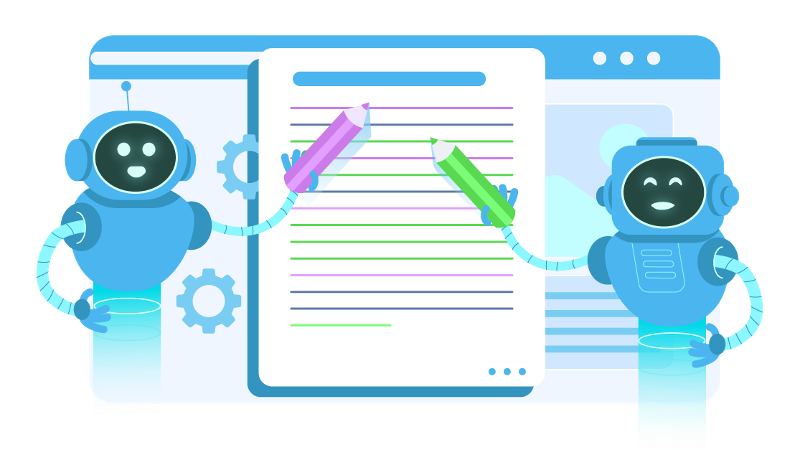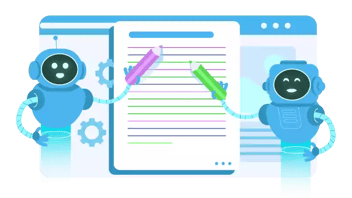Mejora tu contenido con HubSpot Marketing Hub para marketing de contenidoss. Descubra cómo las estrategias y herramientas de HubSpot impulsan el éxito.
Optimiza la distribución de contenidos para maximizar tu alcance
La distribución de contenidos es la forma de proporcionar contenidos a su audiencia utilizando diversos canales y formatos de medios. Debe investigar y documentar un plan sobre dónde y cómo publicará y promocionará sus contenidos antes de empezar a producirlos.
Las marcas tienden a asumir que necesitan publicar contenidos en todas partes. Este enfoque no tiene en cuenta si se está llegando a las personas adecuadas, si las personas a las que se está llegando son receptivas a sus mensajes particulares, o si tener relaciones con estas audiencias tendrá algún impacto significativo en su negocio.
A continuación encontrará una lista de lo que implica determinar el mejor plan de distribución de contenidos de su marca y los factores que debe tener en cuenta a la hora de documentar dicho plan.
En un día determinado, no hay certeza de que cualquier lista sea completa, pero esto representa las prácticas actuales y los conceptos englobados por la frase "distribución de contenidos".
Considere las opciones de plataformas de medios
Existen tres categorías de plataformas de medios para la distribución de contenidos: medios propios, compartidos y de pago.
-
Los medios propios son canales de distribución que su marca posee y controla. Esto incluye sus sitios web, correo electrónico, boletines y cuentas de redes sociales. Puede ser difícil motivar a su público para que visite sus contenidos con regularidad.
-
Los canales compartidos son aquellos en los que un tercero promociona o comparte tus contenidos. Se trata de clientes, periodistas, blogueros y cualquiera que comparta tus contenidos de forma gratuita. Esto incluye relaciones públicas, menciones y comparticiones en redes sociales, artículos de invitados, resúmenes, reseñas de productos y foros como Reddit o Quora. El contenido de estos sitios es propiedad de terceros, por lo que las políticas y procedimientos, o incluso la existencia real, de un canal compartido pueden cambiar sin previo aviso.
-
Los medios de pago ofrecen a su marca la oportunidad de compartir cualquier mensaje y controlar el entorno en el que aparecen los mensajes, aunque a un coste. Su empresa paga para distribuir contenido a través de estos canales, incluidos el pago por clic (PPC), los anuncios sociales pagados y el contenido pagado de personas influyentes.
Con el tiempo, es probable que necesite distribuir su contenido a través de varias plataformas para ser competitivo y crecer. Cuando se empieza o se lanza una nueva iniciativa, resulta útil comenzar con algo como un blog de empresa o un podcast en el sitio web de la empresa. Establece una base para el tráfico que genera tu contenido y puedes controlar el flujo de información.
Elija las plataformas más adecuadas para su contenido
Tiene que entender claramente la propuesta de valor única de cada canal y si esos beneficios se alinean con su audiencia, la voz de su marca y sus objetivos. ¿Cómo hacerlo?
-
Determine a qué público llegará con cada canal en particular. Asegúrese de que la audiencia coincide con sus personajes de contenido. Y asegúrese de que el público encuentra valor en su contenido.
-
Asegúrese de que el tono, la voz y el estilo de su marca encajan bien con este público.
-
Investiga con qué frecuencia este público quiere saber de ti. Identifique qué temas están prohibidos. Determine si las fotos, los vídeos o los contenidos largos basados en texto encajan mejor.
-
Identifique los recursos que le permitan interactuar de forma coherente en este canal. Asegúrese de que puede escuchar, responder y participar en las conversaciones e iniciarlas usted mismo.
Aspectos a tener en cuenta al desarrollar un plan para cada canal
-
Defina la audiencia que más participa en este canal.
-
Exponga los objetivos que este canal le ayudará a alcanzar. Determine si se trata de una oportunidad para lograr algo que no puede conseguir en otro canal.
-
Especifique qué temas concretos resonarán en esta comunidad.
-
Utiliza métricas para decidir con qué frecuencia y cuándo (días y horas del día) debes publicar en este canal.
-
Reparte tu tiempo entre contribuir a las conversaciones y escucharlas.
-
Evalúa qué tipos de contenidos y formatos son los mejores en este canal.
-
Elabore una lista de los criterios y consideraciones específicos que determinan la voz y el estilo de conversación de cada canal.
-
Identifique al miembro del equipo que se encargará específicamente de la comunicación en este canal, así como a otras personas a las que se autorizará a publicar. Identifique también al miembro o miembros del equipo que se ocuparán de las preguntas que se formulen o de los problemas que puedan surgir.
-
Decida cuáles serán sus llamadas a la acción. Identifique los medios propios y los puntos de conversión a los que dirigirá el tráfico.
-
Especifique las métricas que utilizará para comprobar el rendimiento de los contenidos con respecto a los objetivos establecidos.
También te puede gustar
Cree y promocione su contenido
A medida que produzca su contenido, considere cómo estos factores le ayudarán a lograr un mayor éxito en las búsquedas y un rendimiento más sólido:
Los metadatos permiten a los motores de búsqueda clasificar y mostrar su contenido de forma eficaz. Debe maximizar la utilidad de las categorías, los títulos de las páginas, las URL y las etiquetas. Usted está cubriendo las diversas maneras de proporcionar contexto y significado a su contenido.
Las palabras clave son etiquetas de metadatos que indican a los motores de búsqueda de qué trata su contenido. De esta manera, pueden decirle a su audiencia que usted tiene la información que ellos buscan. Asegúrese de elegir palabras clave que sean claras y descriptivas.
Utilice llamadas a la acción para situar a los usuarios en el camino que usted ha designado para llevarlos hacia la conversión: las llamadas a la acción indican a los usuarios que desea que actúen después de interactuar con su contenido.
Para obtener resultados de SEO satisfactorios, debes conseguir tráfico de referencia mediante vínculos de retroceso a tu contenido desde publicaciones respetadas, personas influyentes en las redes sociales y líderes de opinión del sector. ¿Quieres saber más sobre backlinks?
Más allá del contenido de pago y del orgánico, está el contenido perenne
Amplíe el impacto del contenido de alto rendimiento reutilizándolo y resurgiendo. Al amplificar estas piezas de contenido, refuerzas el valor de tu marca y aumentas las probabilidades de que sean descubiertas por audiencias que podrían no haberlas visto antes. Prueba estas técnicas, solas o combinadas:
-
Volver a publicar. Suponiendo que el valor sigue ahí, actualiza todo lo que esté obsoleto y vuelve a ponerlo en los feeds de los lectores.
-
Reempaquetar. Descomponga el contenido de formato largo, como libros blancos y libros electrónicos, en piezas modulares más pequeñas. A continuación, recombínelos con información relevante sobre un tema para formar un nuevo artículo.
-
Reutilizar. Deconstruya la pieza original y cree nuevas conversaciones. Deje intacto el mensaje original. Asegúrese de adaptarlo a la nueva plataforma.
Más información sobre contenidos perennes.
Este contenido también está disponible traducido en:
- Alemán: Maximieren Sie Ihre Reichweite: Effektive Content-Strategien für 2025
- Inglés: Maximizing Reach: Optimal Content Distribution Strategies
- Francés: Maximiser la portée : Stratégies optimales de distribution de contenu
- Italiano: Strategie ottimali per massimizzare la portata dei contenuti
- Rumano: Strategii optime pentru distribuția conținutului
- Chino: 最大化传播范围:最佳内容分发策略










Deja un comentario